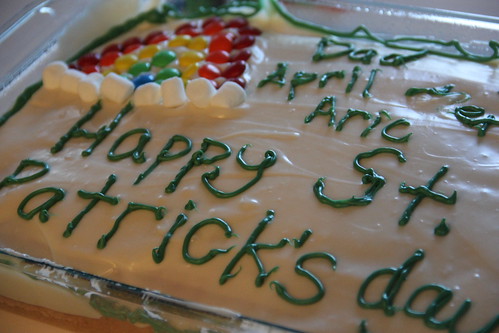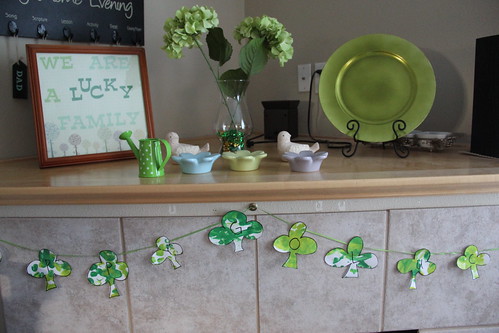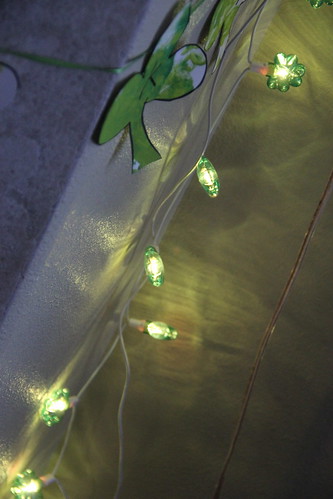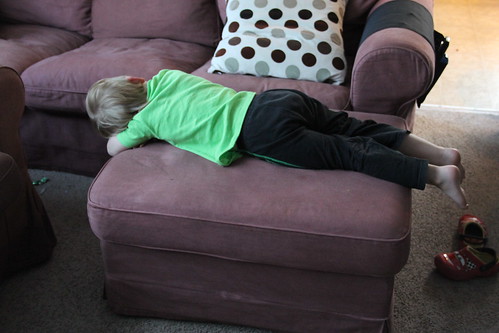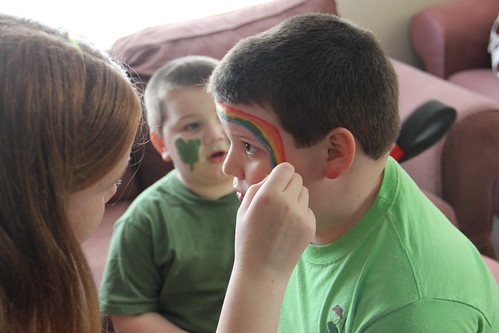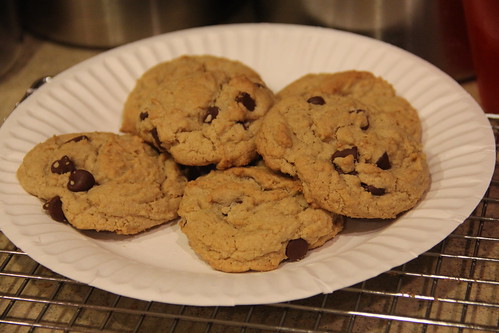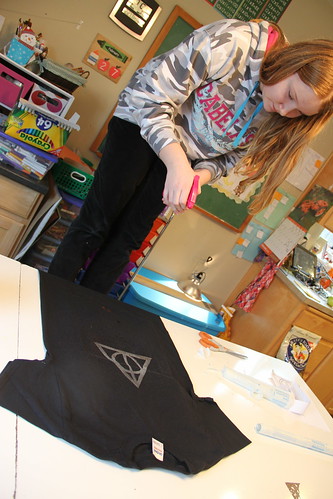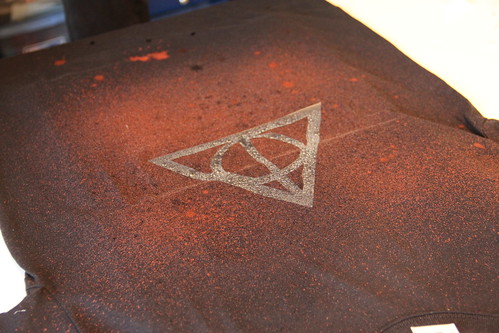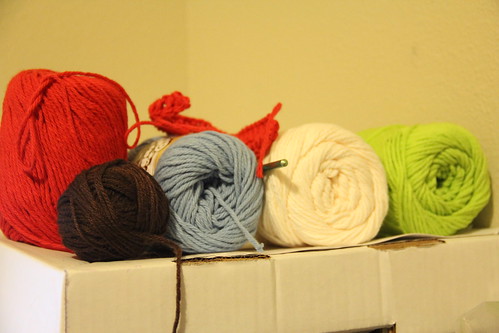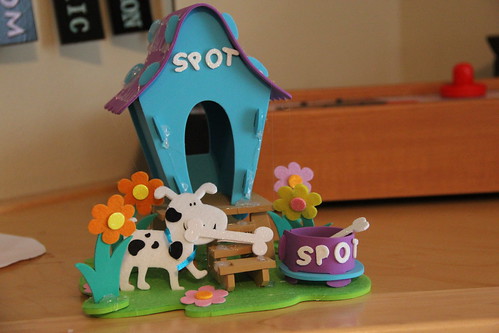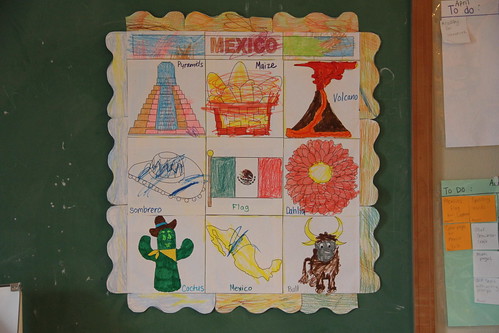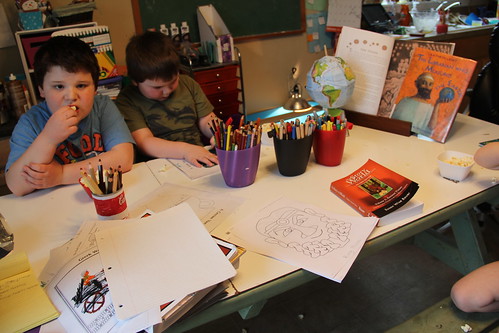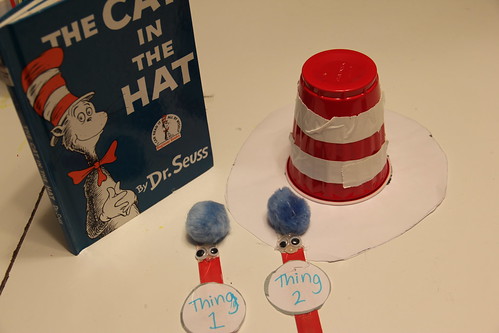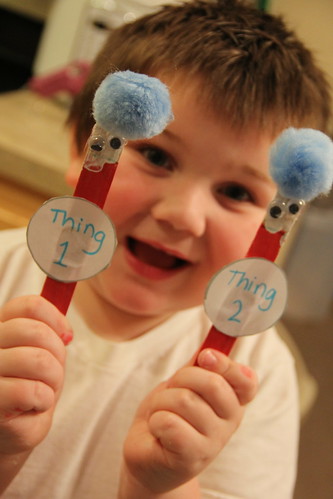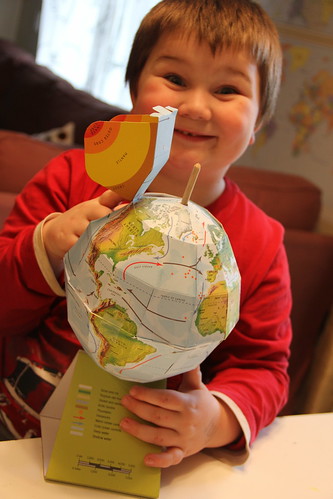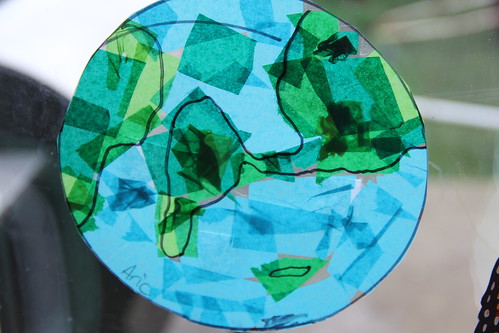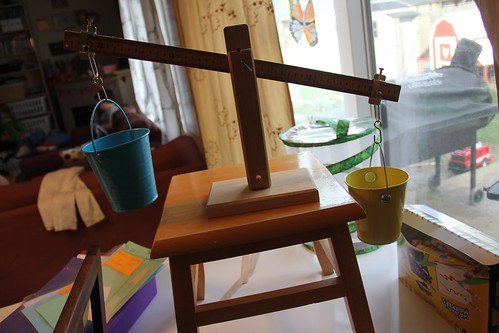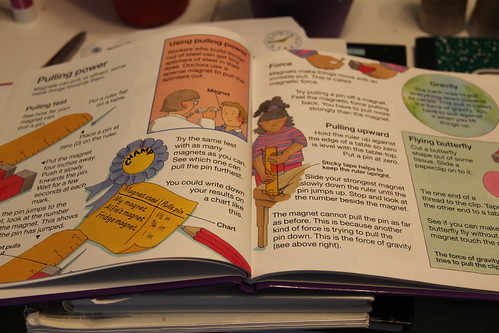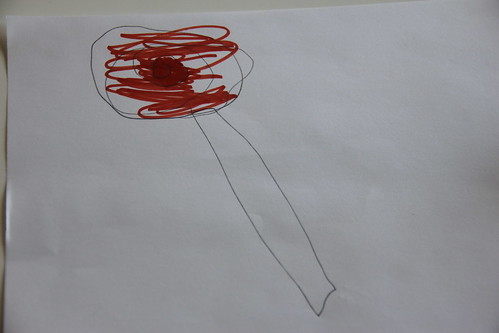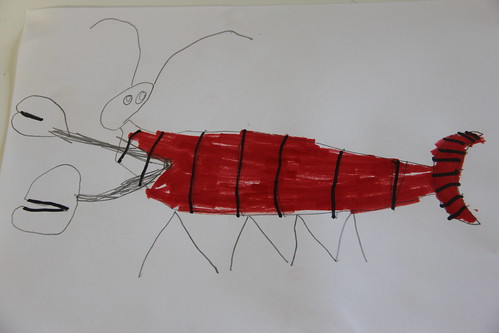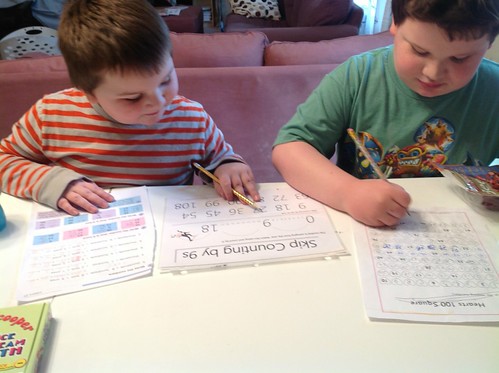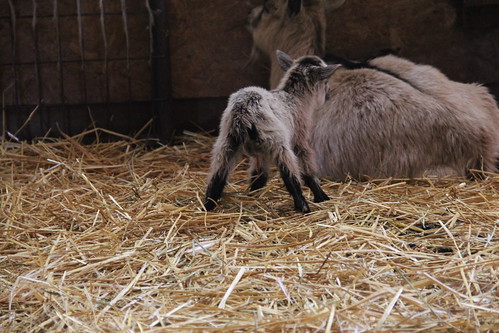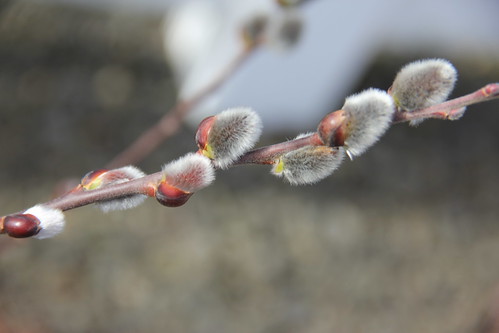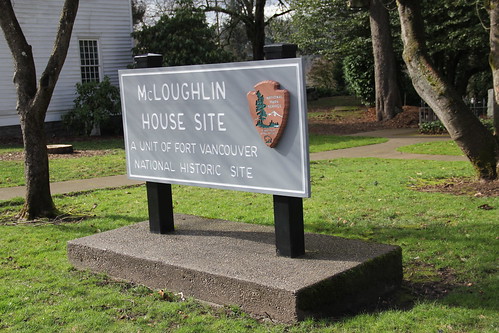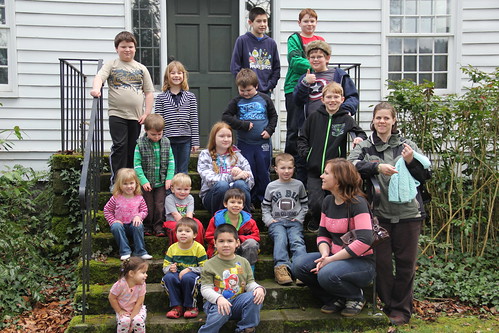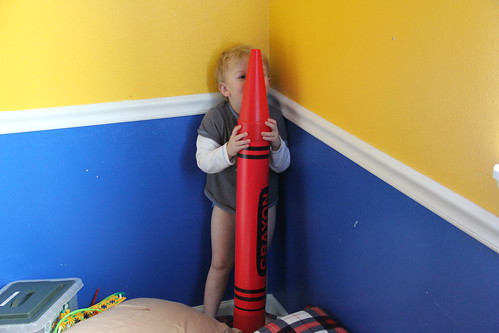I want to share 2 of our recent family home evenings. Sorry, this is about as exciting as life gets around here right now. Since we aren't really doing much while Daddy's back is healing, you get to hear about FHE!
Exciting right?
Oh well, even if you really aren't all that excited about it, I'm always happy to pull any family night off with a coherent spiritual thought, and fun. It's memories, and something I'm really working hard at trying to be better about, so I share it here.
First FHE: This one was about the tower of Babel. We had been reading that part in the Old Testament, and I wanted to really expand on the story a little bit. We did most of the activities from this
post on The Family Home Evening Spot. There are a lot of great ideas there (coloring pages, songs, etc.)
For one of the activities I put word bubbles around the room with hello in different languages. April wrote these out. We learned how to say hello in a few ways!
Then we played Jenga and made a "tower" which fell a few times, while eating root beer floats for the snack.
Second FHE: This was about
Small and Simple things done for others that can bring greatness to their lives. This was a review of a General Conference talk from the Oct. 2013 conference. I recently gave a lesson in Relief Society on this talk, so I decided to make it into a FHE lesson for my family too because it's a great message. Also, with conference coming up again I love the idea of
reviewing past talks to get the kids ready.
I tied small and simple things into colors by talking about the primary colors and how they start out simple (red, yellow, and blue) but can become something great by being mixed together. So, here's Alex leading our opening song "The Primary Colors." (Yes, he is holding the ipad, it's our music!)
I made a sheet with the quote for the kids to color a rainbow on. I loved the color theme of this FHE
In case you want to do this FHE with your family, here is what we did:
Small and Simple things FHE
To go along with the conference talk by Elder Arnulfo Valenzuela
Supplies: For lesson--Red, yellow, blue, green, orange, and purple paper. For activities—
colorwheel printable, food coloring, paper towels, jar. Optional: Copy of talk by Elder Arnulfo Valenzuela from October 2013 General Conference.
Opening song: Primary colors (Children's songbook, p. 258)
Scripture: Alma 37:6-7
Lesson/Story:
This talk is about how the small and simple acts of kindness that we can do for others can have a big impact and bring good and greatness to them. The small and simple things that we can do each day may seem very small to us, but it can be a very great thing for someone who is in need. What are some ideas of a small and simple thing that you can do for someone? (smile and say hi, any kind of service or love, a hug, be a friend...)
What are the primary colors? Red, yellow, and blue right? (hold up red, yellow, and blue paper or color wheel) These are pretty simple colors. Are they the only colors we have? No, but we need these colors to get the other colors, green, orange, and purple (hold up green, orange, and purple). The primary colors start as a simple color, but when 2 primary colors are mixed something great happens. Do you know what that is? They become a different color! The small and simple act of changing the primary color by mixing it gives us something great, a new color to enjoy!
This is like the small and simple acts of service we give. We can do something simple that might not seem great at first, but will be great for the person you are giving it to no matter how small. So, next time when you think your small and simple act of kindness won't help, think about the primary colors and how a small and simple mix of 2 colors can become something great. Your act of service can become something great too!
Activities (choose one or both):
1. Make or print a color wheel to see the mixing of colors in action. There are many free printables online if you search color wheel printable.
2. This fun color experiment from the Nov. 1982 Friend magazine called Black to black.
Black to Black
Begin by mixing together in a spoon over the sink one drop of yellow food color, three of blue, and seven of red. Because the strength of each color varies, you may need to experiment to get a true black.
Next, cut a paper towel or another kind of absorbent paper into 1″ x 1′ strips. Then use a toothpick to place a drop of black liquid about 3″ from one end of each strip. Hang strips in a jar containing a little water as shown. Ends of paper must touch water, but black spots must not. Bend upper part of paper strips over jar’s edge, and tape strips in position.
In a few minutes, black spots will move up the strips with the water and become a rainbow of color. Both the primary colors—yellow, blue, and red—and the secondary colors—orange, purple, and green—can be seen. Eventually, secondary colors disappear, leaving only primary colors. Then primary colors become separated on strips.
After the colors separate, it is possible to get them to form black again on strips. Begin with shorter strips this time, and don’t bend them. Instead, poke a straightened paper clip through upper end of strips—with black spots above the water—and suspend strips in center of jar with paper clip wire reaching across jar’s mouth. After the first color reaches top of strip, it can go no farther; soon the other two colors will join it to make black again—if you wait long enough.
Craft/coloring page:
Have children draw a picture of the rainbow with the following quote:
“Let us reach out to others
with faith and with love.”
Closing song: Give said the little stream (Children's songbook, p. 236)
Snack: Make some monster cookies with colorful M&M's, or some other colorful treat (we ended up having colorful popsicles).

